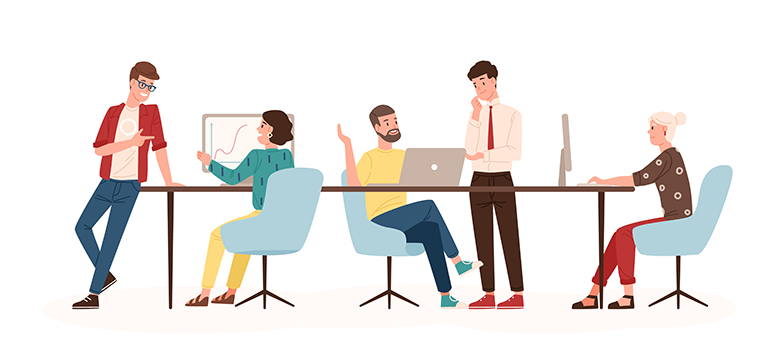What is the difference between UI design and UX design
The terms UI (User Interface) design and UX (User Experience) design are often used interchangeably, but they refer to distinct aspects of the design and development process of digital products. Understanding the differences between these two concepts is crucial for creating effective and engaging digital experiences.
User Interface (UI) Design
UI design focuses on the visual and interactive elements of a product. It's about creating interfaces that users interact with, ensuring that they are visually appealing, consistent, and functional. The primary responsibilities of a UI designer include:
- Visual Design: Crafting the look and feel of the product through color schemes, typography, icons, and layout. This involves creating a visually appealing aesthetic that aligns with the brand’s identity.
- Interactive Design: Defining how the product responds to user actions. This includes designing buttons, sliders, menus, and other interactive elements.
- Consistency: Ensuring uniformity across the product to provide a seamless experience. This involves adhering to design guidelines and maintaining consistency in design elements across different screens and devices.
- Prototyping: Creating detailed mockups and interactive prototypes that visually represent the final product. This helps in testing and refining the design before development.
User Experience (UX) Design
UX design is broader and more holistic, focusing on the overall experience users have with a product. It encompasses all aspects of the user's interaction with the company, its services, and its products. The primary responsibilities of a UX designer include:
- User Research: Conducting research to understand user needs, behaviors, and motivations. This involves interviews, surveys, and usability testing to gather insights into how users interact with the product.
- Information Architecture: Structuring and organizing content in a way that users can easily find information. This involves creating sitemaps and defining the navigation flow.
- Wireframing and Prototyping: Developing wireframes and low-fidelity prototypes to outline the structure and functionality of the product. This helps in testing concepts and iterating based on user feedback.
- Interaction Design: Designing the overall flow and interaction of the product to ensure it is intuitive and meets user needs. This includes defining how users navigate through the product and interact with its elements.
- Usability Testing: Conducting tests to evaluate the product’s ease of use and identifying areas for improvement. This involves observing users as they interact with the product and making necessary adjustments based on feedback.
Key Differences
- Focus: UI design is focused on the product’s interface and how it looks, while UX design is concerned with the overall experience and how it feels.
- Scope: UI design deals with the surface layer of the product, including visual elements and interactive components. UX design encompasses the entire journey of the user, from the initial interaction to the final outcome.
- Tools and Techniques: UI designers often use tools like Sketch, Figma, and Adobe XD for creating visual designs. UX designers might use tools like Axure, InVision, and Balsamiq for wireframing and prototyping, as well as research tools like UserTesting and Optimal Workshop.
- Objectives: The goal of UI design is to create an attractive and responsive interface, while the goal of UX design is to provide a meaningful and enjoyable user experience.
Collaboration and Overlap
While UI and UX design are distinct disciplines, they are highly interrelated and often overlap. A successful product requires seamless collaboration between UI and UX designers. UX designers need to understand visual design principles to create intuitive interactions, while UI designers need to consider user research and usability findings to create effective interfaces.
In practice, many designers possess skills in both areas and may perform tasks that span both UI and UX design. However, larger projects and organizations often have dedicated UI and UX designers to ensure a comprehensive approach to both the interface and the overall experience.
Conclusion
In summary, UI design and UX design are two critical aspects of creating digital products, each with its own focus and methods. UI design is about the visual and interactive elements of the product, ensuring it is aesthetically pleasing and functional. UX design is about the overall experience, ensuring it is intuitive, efficient, and satisfying. Understanding and integrating both disciplines is essential for delivering products that not only look good but also provide a positive and engaging user experience.
Related Posts
- Website Design Trends: Stay Ahead in 2024
- The Essential Website Design Requirements Checklist: A Blueprint for Success
- The Essential Website Design Testing Checklist: Ensure Your Site's Success
- Crafting Seamless Experiences: The Essentials of User Experience (UX) Design
- Unraveling the Web: Decoding the Distinctions Between Web Designers and Web Developers

